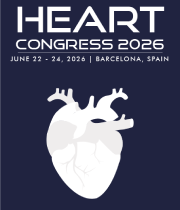Title : Virtual surgery design of double-patch for pulmonary arterioplasty in complete repair of tetralogy of fallot using computational hemodynamics
Abstract:
Objective In tetralogy of Fallot (TOF) with combined pulmonary artery (PA) branch stenosis, proper management of right ventricular outflow tract (RVOT) stenosis is the key to successful surgical correction. The purpose of this study is to evaluate the effective design of double-patch implantation in complete repair of TOF based on computational hemodynamic simulation and computer-aided design (CAD). Methods On the basis of preoperative computed tomography (CT) imaging data obtained from the TOF patient, we reconstructed a three-dimensional (3D) geometric model of PA. The original reconstructed model displayed severe stenosis in the main pulmonary artery (MPA) and the proximal left pulmonary artery (LPA), mild stenosis in the origin of the right pulmonary artery (RPA). The angle between the centerline of LPA and the centerline of RPA, defined as θ, equals to 120°. The “virtual surgery” was carried out to simulate four possible postoperative states with the aid of the technique of CAD. Model 1: double patches implanted in the MPA and the LPA with θ=120°; Model 2: double patches implanted in the MPA and the bifurcation of the LPA and RPA with θ=120°; Model 3 and Model 4 were separately created with θ=110° and 130° based on Model 2. Combined with computational hemodynamic simulation, the parameters including pressure, velocity, wall shear stress (WSS) and energy loss (EL) after four double-patch implantations were analyzed. Results The CFD results suggested that the flow field improved when the angle θ was changed. The pressure and WSS on the pulmonary flow field were decreased significantly in four virtual postoperative models, but there were still the high-WSS regions at the bifurcation of LPA and RPA. The obvious flow disturbance was observed in the distal of LPA and RPA of Model 1, while the flow disturbance decreased and flow velocity increased downstream the LPA-RPA patch of Model 2, Model 3 and Model 4. The EL was greatly reduced after virtual surgery, and was the lowest in Model 4. Conclusions The angle between LPA and RPA should be considered in the double-patch design for pulmonary arterioplasty in complete repair of tetralogy of Fallot. CAD and CFD, as noninvasive and useful methods to explore the appropriate design of double-patch implantation meeting the optimal hemodynamic characteristics, might provide assistance for individualized surgical planning.



